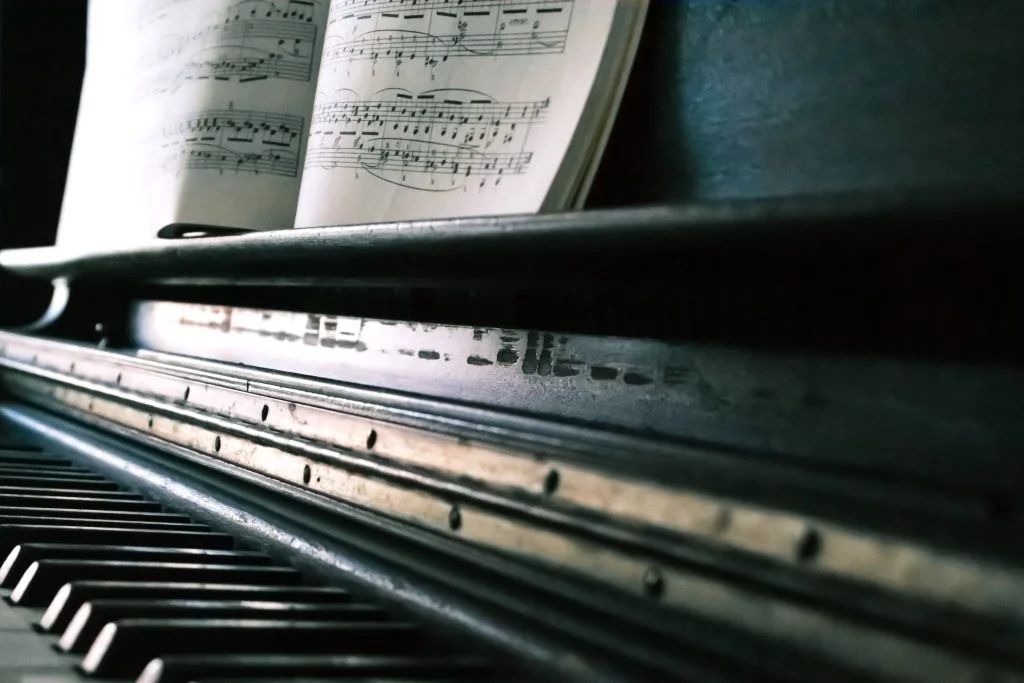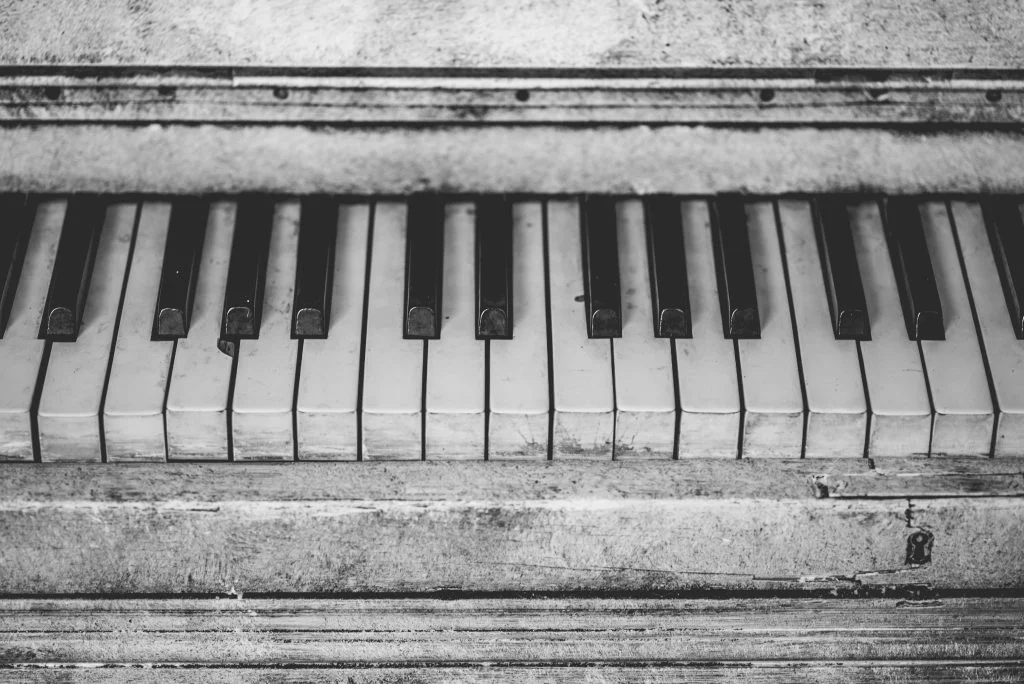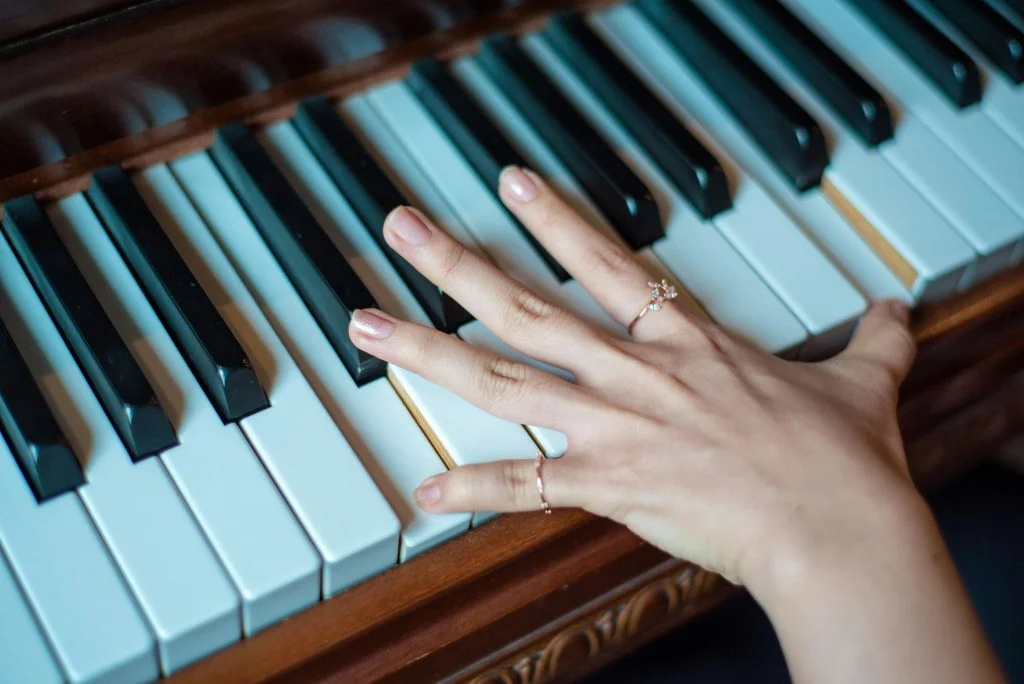As a lifelong piano enthusiast, I’ve tickled the ivories more times than I’ve sipped a cup of coffee—and trust me, I’m a serious caffeine addict! From the majestic grand pianos that made me feel like a concert maestro, even in my pajamas, to the quirky, out-of-tune uprights that sounded like they’d been through a musical war, each piano has a story. And, oh, the tales I could tell!
Did you know, for instance, that some pianos have more than the standard 88 keys? Or that my cat once played a note that sounded suspiciously like middle C? Coincidence? I think not! So, as you embark on this symphony of piano facts, ask yourself: Have you ever serenaded your plants with piano music? If not, why not start today?
The piano is the easiest instrument to play in the beginning, and the hardest to master in the end.
Arthur Rubinstein
Piano Facts
Dive with me into a world of musical wonder with these piano fun facts! Stay tuned till the end for a quiz that will test your newfound knowledge – don’t miss a note!
- The modern piano was invented by Bartolomeo Cristofori of Italy in the early 18th century.
- Pianos usually have 88 keys: 52 white and 36 black, spanning seven and a quarter octaves.
- The word “piano” is a shortened form of pianoforte, which means “soft loud” in Italian, referring to its dynamic range.
- Grand pianos and upright pianos are the two main types of pianos.
- The strings in a piano are made of high-quality steel and can hold under 20 tons of tension.
- A piano’s frame, often made of cast iron, is responsible for withstanding this tension.
- The longest grand piano in the world, built by Adrian Mann, is 5.7 meters long.
- A typical piano has about 230 strings, with each string holding about 75 pounds of tension.
- Piano playing can improve hand-eye coordination and fine motor skills.
- The range of the piano has grown since its invention, from four octaves to the current seven-plus.
- Learning to play the piano can boost cognitive development, especially in children.
- The world’s most expensive piano, the Heintzman Crystal, was sold for $3.22 million in 2008.
- Piano keys were originally made from ivory, but now they are mostly made of plastic or composite materials.

- The largest piano ever built weighed 1.4 tons and was built by Daniel Czapiewski.
- A piano’s sound is produced when hammers strike strings, causing them to vibrate.
- The first known piano compositions were written in the 1730s.
- The sustain pedal, or damper pedal, is the most commonly used pedal on a piano.
- Beethoven’s last piano, a Broadwood, is displayed in Budapest’s National Museum.
- A piano tuner adjusts the tension of the strings to properly tune the piano.
- The hammers in a piano are covered with a special felt that wears down with use.
- Chopin composed primarily for solo piano.
- A typical upright piano has more than 5,000 parts, making it a complex instrument.
- The middle pedal on a grand piano is usually a sostenuto pedal.
- Square grand pianos, popular in the 19th century, are now rarely seen.
- The range of the piano makes it suitable for solo performances and accompaniment.
- Player pianos can play by themselves using a roll of paper with punched holes.
- The first electric pianos appeared in the 1920s.
- Mozart was known for his exceptional piano playing skills as well as his composing.

- Pianos are typically tuned to A440 Hz, where A above middle C vibrates at 440 cycles per second.
- The action mechanism of a piano is highly complex, with each key having over 100 parts.
- Yamaha and Steinway are among the most renowned piano manufacturers.
- Thelonious Monk was known for his unique approach to piano jazz.
- John Cage created a piece for a “prepared piano”, a piano altered by objects placed on its strings.
- Practice pianos have a mechanism to mute the sound for quiet practice.
- A piano’s soundboard amplifies the vibration of the strings, creating a richer sound.
- Silent pianos allow for headphone use without producing audible sound from the piano itself.
- The Rhodes piano, an electric model, was pivotal in the development of funk and jazz.
- Many classical composers were proficient pianists, including Liszt, Rachmaninoff, and Schumann.
- Toy pianos, often used by children, work on the same principle as full-sized pianos.

- A piano’s black keys are called sharps and flats, and they play half step intervals.
- Lang Lang is a famous contemporary concert pianist known for his technical skills.
- Improvisation is a key skill in jazz piano playing.
- The drop action mechanism is commonly found in spinet pianos.
- Microtonal pianos are designed to play intervals smaller than a half step.
- The oldest surviving piano is from 1720, made by Bartolomeo Cristofori.
- Composers like Philip Glass have used the piano extensively in minimalist music.
- Digital pianos use electronic samples to emulate the sound of an acoustic piano.
- A “Concert Grand” piano can be over 9 feet long.
- The double escapement action, developed in the 1820s, allows for rapid repetition of notes.
- Art Tatum, a jazz pianist, was known for his incredible speed and virtuosity on the piano.
Piano Myths

Having explored some interesting piano facts, let’s now dive into the realm of myths and see how they stack up against reality.
- Pianos Never Need Tuning if They’re Not Used
Pianos require regular tuning, regardless of usage frequency. The strings in a piano are under tremendous tension and can lose their pitch over time. Changes in temperature and humidity also affect the tuning, making regular maintenance essential for sound quality. - Playing a Piano is All About Natural Talent
While natural talent can be beneficial, playing the piano proficiently is mostly about practice and dedication. Regular practice, learning theory, and technical exercises are crucial for developing skills, regardless of innate talent. - Electronic Keyboards Are Just as Good as Acoustic Pianos
While keyboards and digital pianos offer convenience and variety, they often lack the nuanced touch and sound of an acoustic piano. The hammer and string mechanism in acoustic pianos provide a unique feel and sound that are hard to replicate electronically. - Older Pianos Are Always Better
Although some vintage pianos are of high quality, age alone doesn’t guarantee a better instrument. The condition and maintenance history of a piano are far more important than its age. Some older pianos may require extensive repairs to restore their sound quality. - All Pianos Sound the Same
Pianos vary greatly in sound due to differences in construction, materials, and design. Factors like the type of wood, string length, and craftsmanship contribute to the unique tonal characteristics of each piano. Therefore, each piano has its own distinct sound profile.
No products found.
Piano Quotes

From the delicate whispers of keys to the thunderous crescendos that resonate in concert halls, the piano has inspired musicians and composers across centuries. Let’s explore some of the most insightful quotes that capture the essence of this beloved instrument.
The piano is my second self.
Frédéric Chopin
Frédéric Chopin, a Polish composer and virtuoso pianist of the Romantic era, stands out for his solo piano works and is often considered one of the greatest piano composers.
I’m not a pianist. I’m a musician who plays the piano.
Arthur Rubinstein
Arthur Rubinstein, a Polish-American classical pianist, earned the reputation of being one of the greatest piano virtuosos of his time.
The piano is the easiest instrument to play in the beginning, and the hardest to master in the end.
Vladimir Horowitz
Vladimir Horowitz, a Russian-born American classical pianist, gains recognition for his virtuosity and the depth of his interpretations.
You write to become immortal, or because the piano happens to be open, or you’ve looked into a pair of beautiful eyes.
Robert Schumann
Robert Schumann, a German composer and influential music critic, immersed himself in the Romantic era and is particularly famous for his piano music and songs.
Music is enough for a lifetime, but a lifetime is not enough for music.
Sergei Rachmaninoff
Sergei Rachmaninoff, a Russian composer, pianist, and conductor, celebrates his piano concertos and symphonic works for their deep romanticism and technical challenges.
Piano FAQ

The ultimate piano quiz is coming up, but before that, let’s take a look at the most frequently asked questions about pianos. Read with care, because your knowledge will be tested.
- Is Piano Harder Than Guitar?
This varies by individual preference and ability. Piano requires reading two lines of music and independent hand coordination, while guitar demands mastering chord shapes and can be tough on the fingers. - When Was the First Piano Made?
Bartolomeo Cristofori in Italy crafted the first piano around 1700, offering the ability to play notes with varying volumes unlike its predecessors. - Is Piano Percussion or Strings?
The piano is a percussion instrument because hammers strike strings to produce sound, even though it has strings. - What Are the Benefits of Learning the Piano?
Piano playing enhances cognitive skills, creativity, and coordination. It’s also an emotional outlet for self-expression and stress relief. - How Does the Piano Work?
Pressing a piano key triggers a hammer to hit a string, creating vibration and sound. The length and tension of the string determine the pitch, and dampers silence the note when you release them.
No products found.
Piano Quiz

Welcome to the grand piano quiz, where the keys to success are knowledge and a bit of luck. But be warned: if you don’t hit the right notes, you might ‘pianoforte’ yourself into a world of endless scales!
Conclusion
From the mysterious middle pedal to the sheer number of strings that would make a cat’s cradle jealous, pianos are truly the unsung heroes of the music world.
But before you go, think about this: If you could be any part of a piano, what would you be? The hammers, always on the beat? Or perhaps the soundboard, resonating with every emotion? Drop your answers in the comments, and keep in mind that in the universe of pianos, everyone’s a maestro at heart!
Source Used For This Article

